Probabilities in Decision Models
Decoding Decision Modeling

Tiago Brasil
Lead Data Engineer
Probabilistic Models
 Probabilistic Models support decision-making by providing a structured approach to handle uncertainties.
Probabilistic Models support decision-making by providing a structured approach to handle uncertainties.
By applying probabilities in decision models we can:
- Quantify uncertainties by assigning values between 0 and 1 to express the likelihood of outcomes
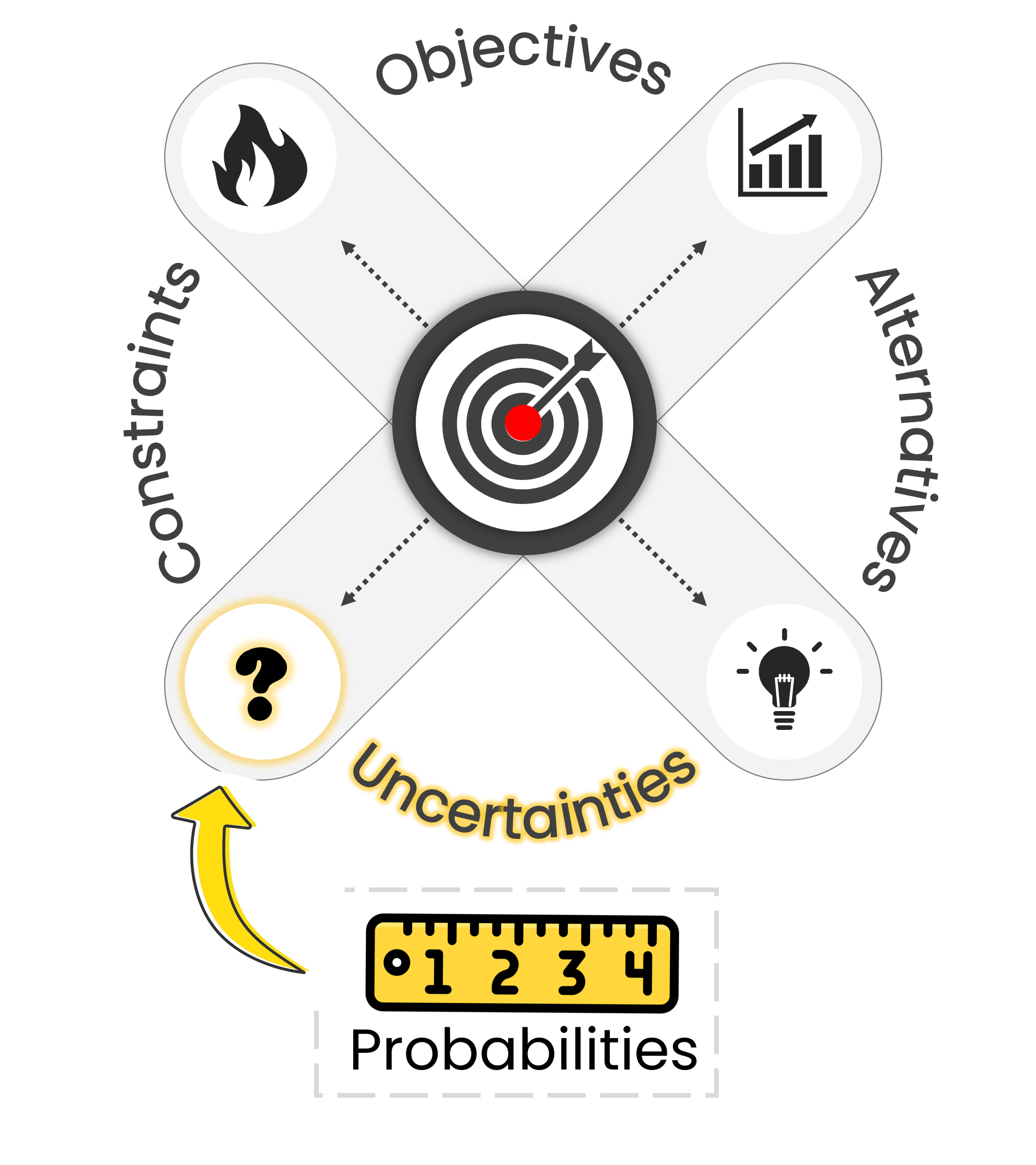
Probabilities and uncertainties
Probabilities allow decision-makers to quantify uncertainties by assigning numerical values to the likelihood of different outcomes occurring.

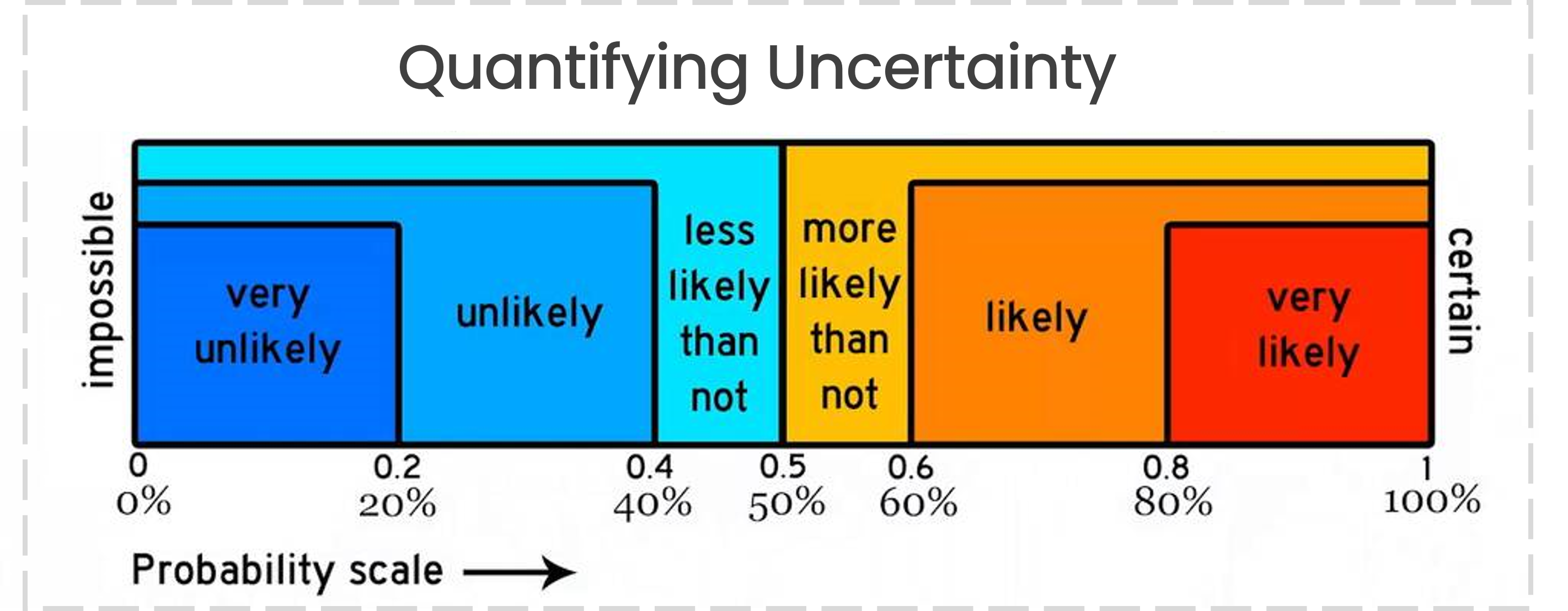
Probabilities in a coin toss
In a standard coin with heads on one side, and tails on the other, let's find the likelihood of the coin landing on heads twice consecutively.
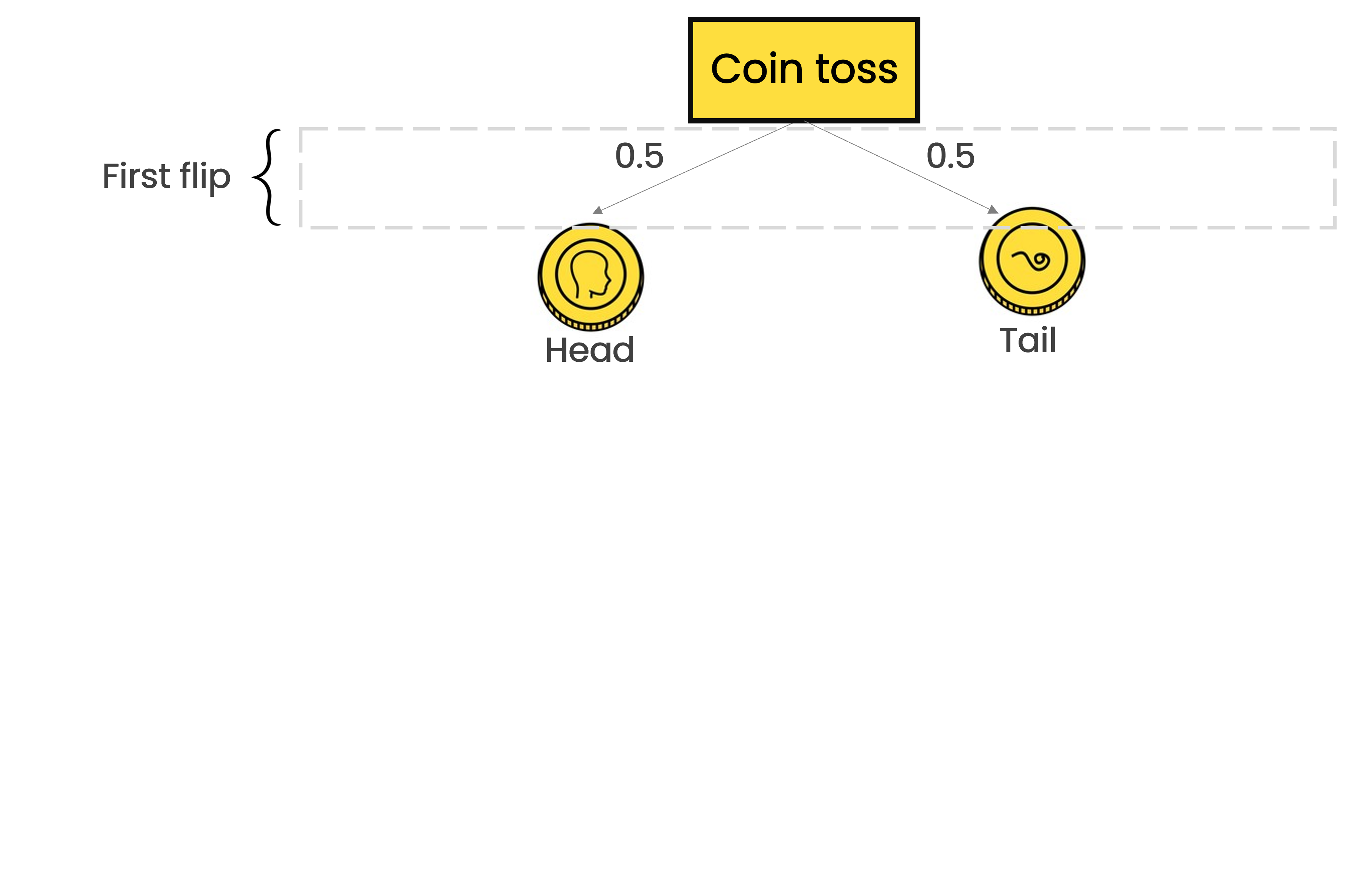
Probabilities in a coin toss
In a standard coin with heads on one side, and tails on the other, let's find the likelihood of the coin landing on heads twice consecutively.
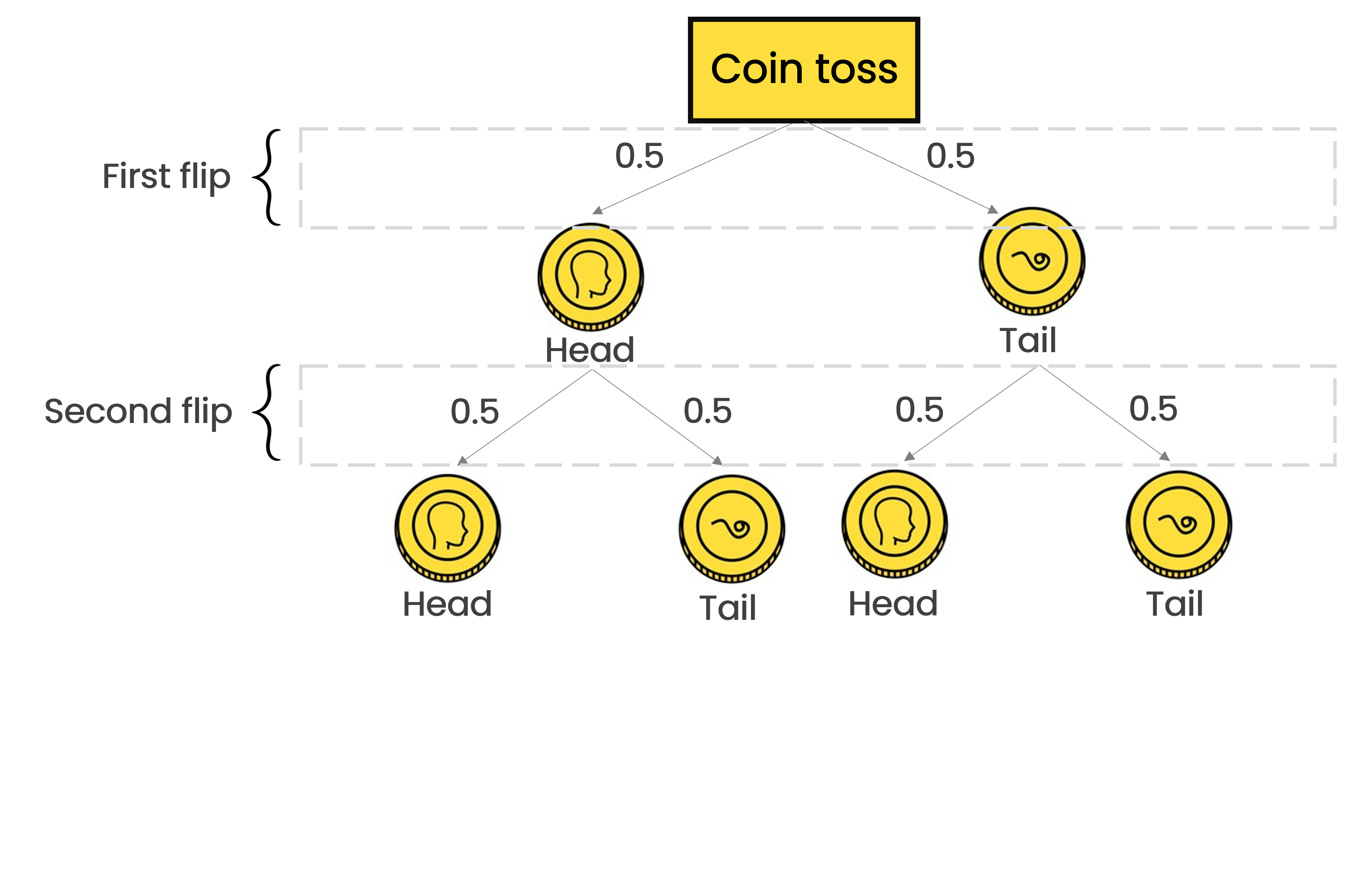
Probabilities in a coin toss
In a standard coin with heads on one side, and tails on the other, let's find the likelihood of the coin landing on heads twice consecutively.
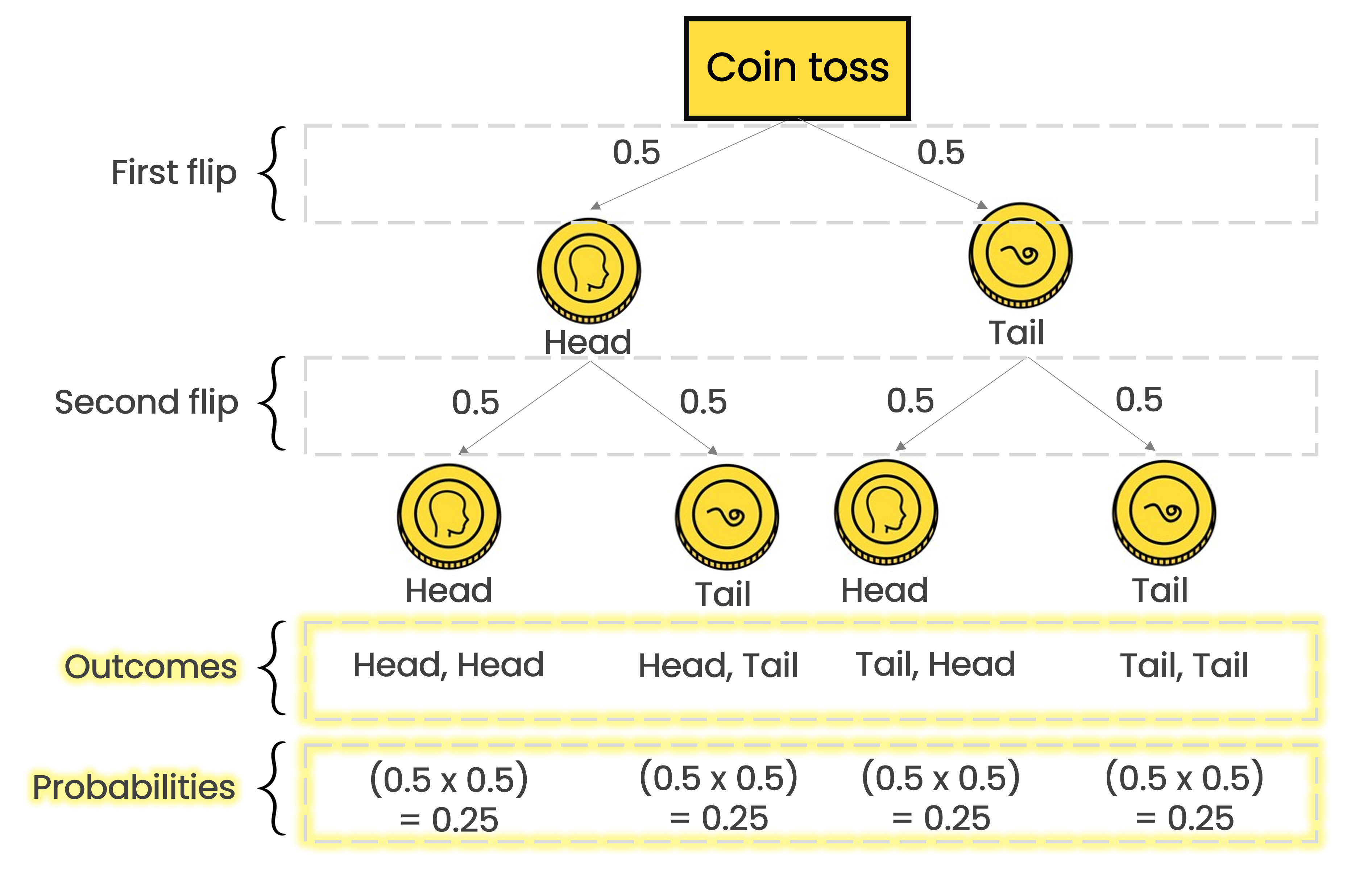
Probabilities in a coin toss
In a standard coin with heads on one side, and tails on the other, let's find the likelihood of the coin landing on heads twice consecutively.
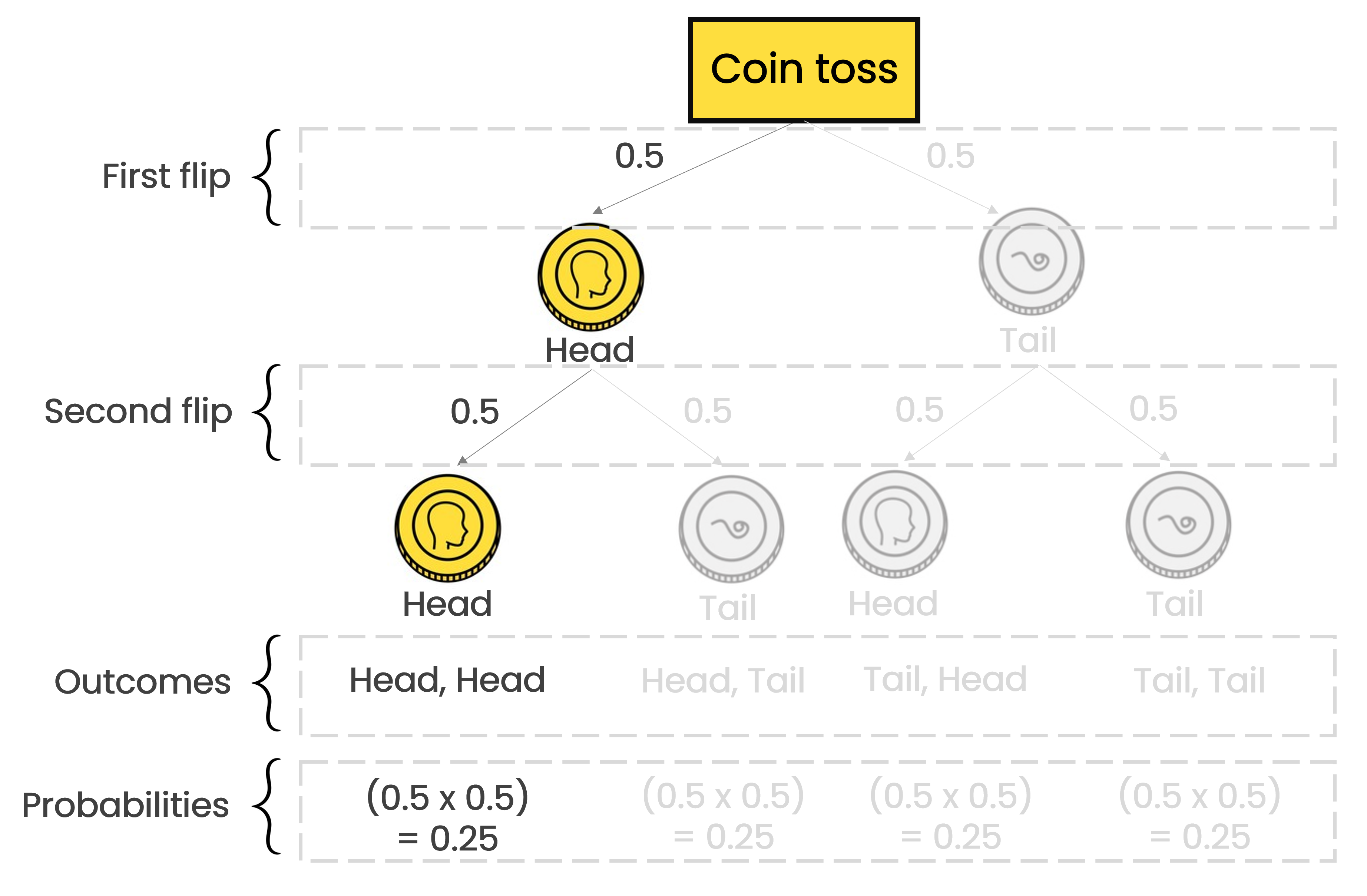
Probabilities in a coin toss

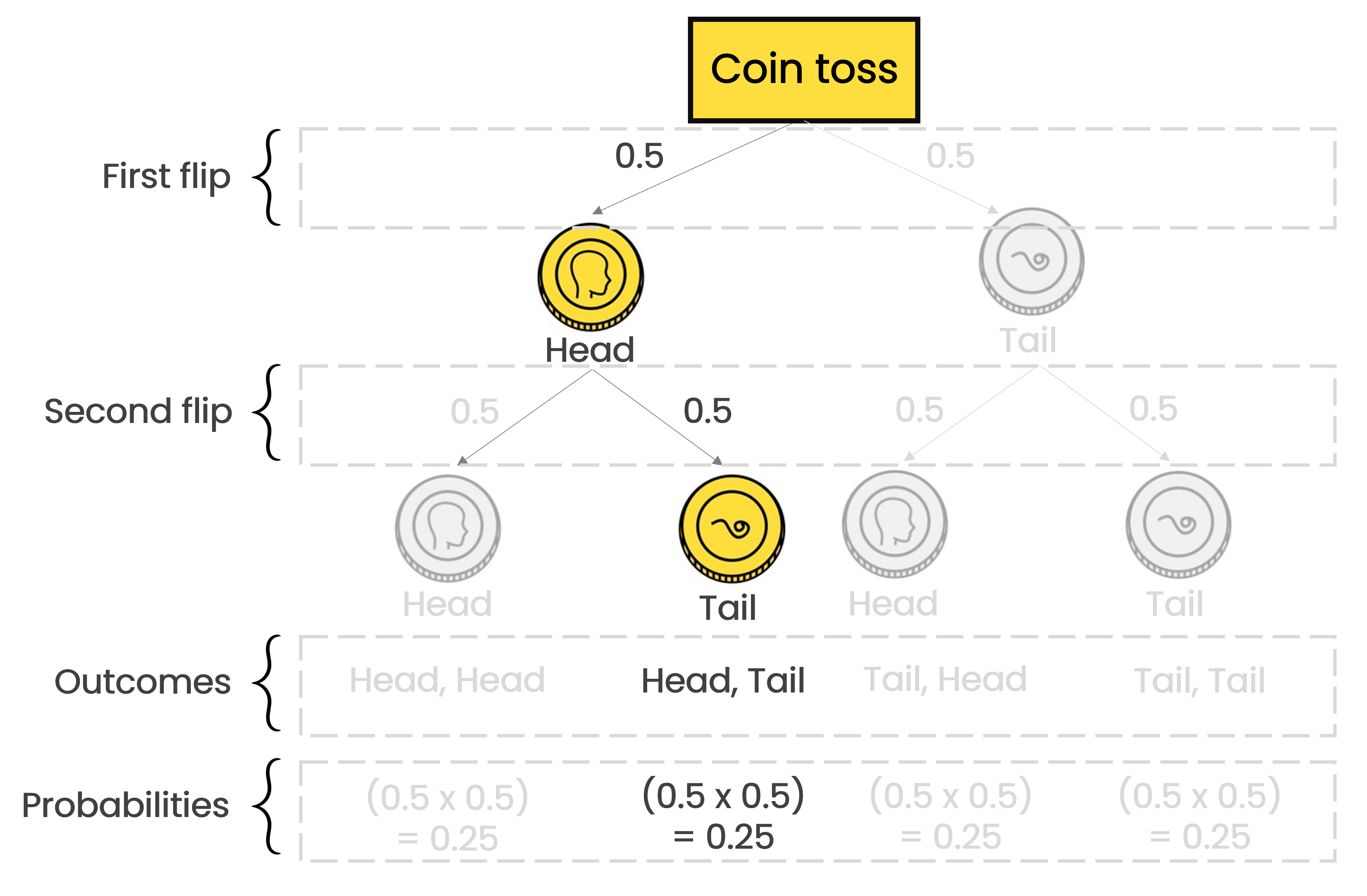

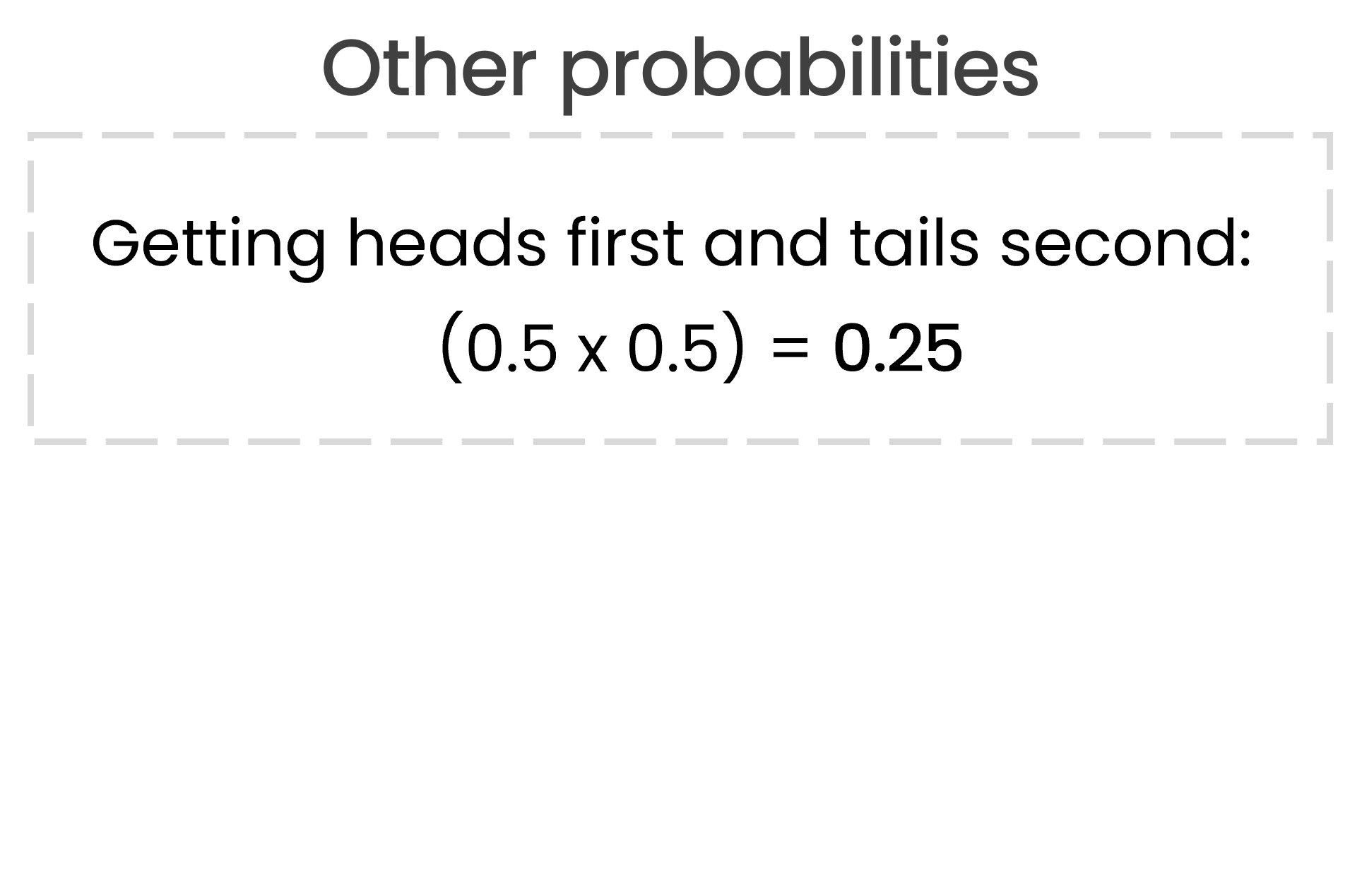
Probabilities in a coin toss

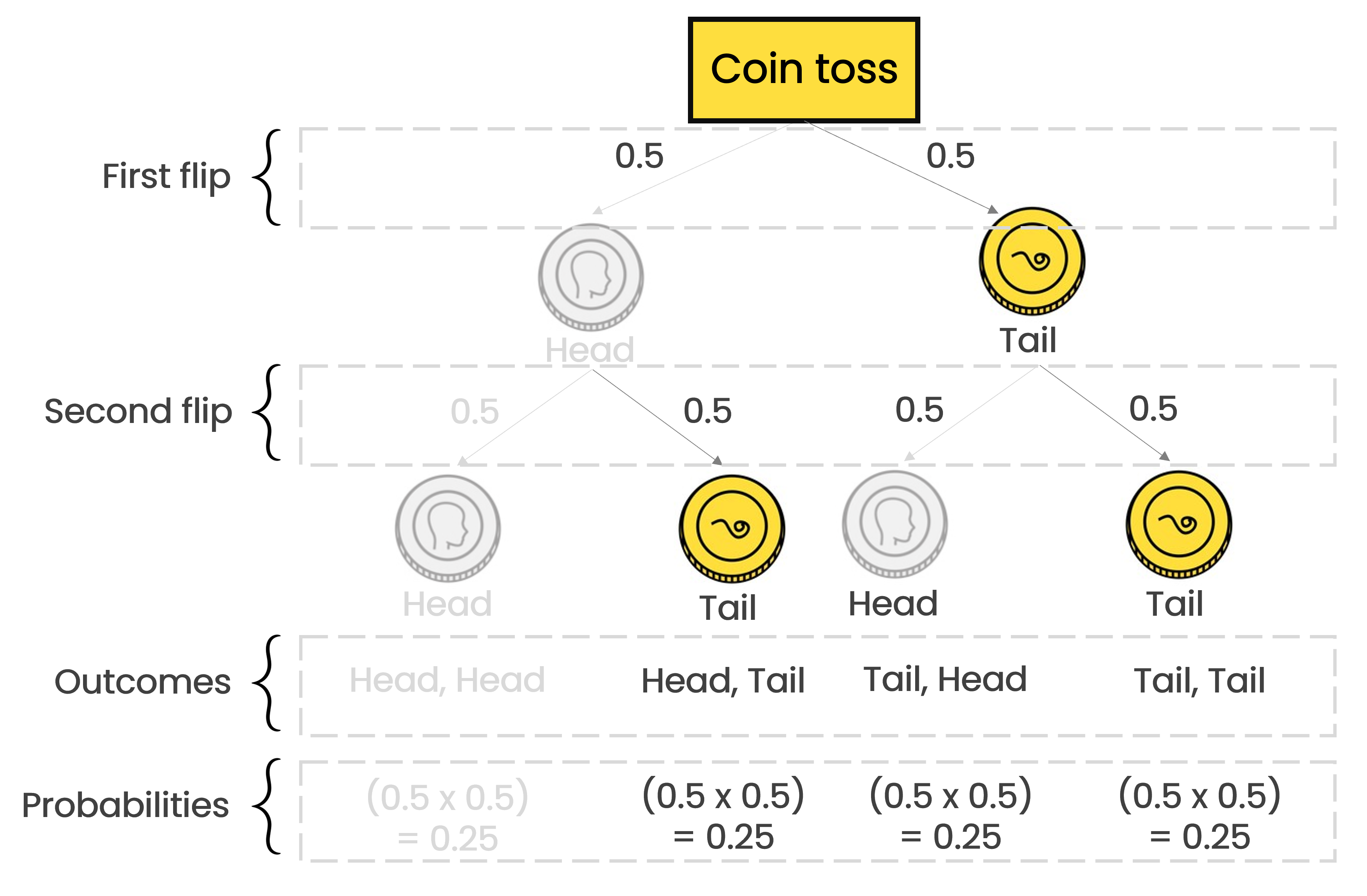

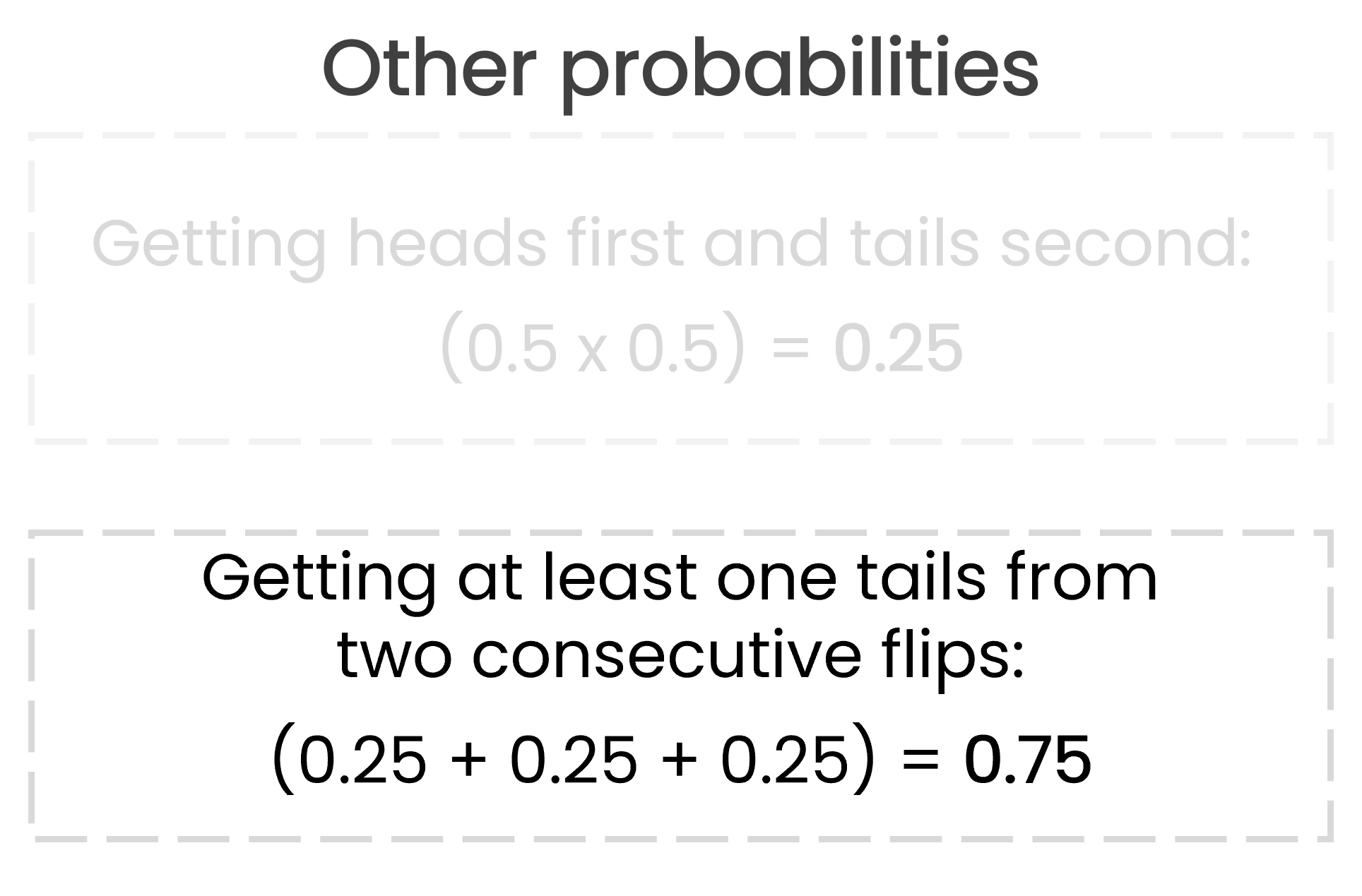
Building a Probabilistic Decision Model
The marketing team of a retail company is deciding where to launch the next campaign.
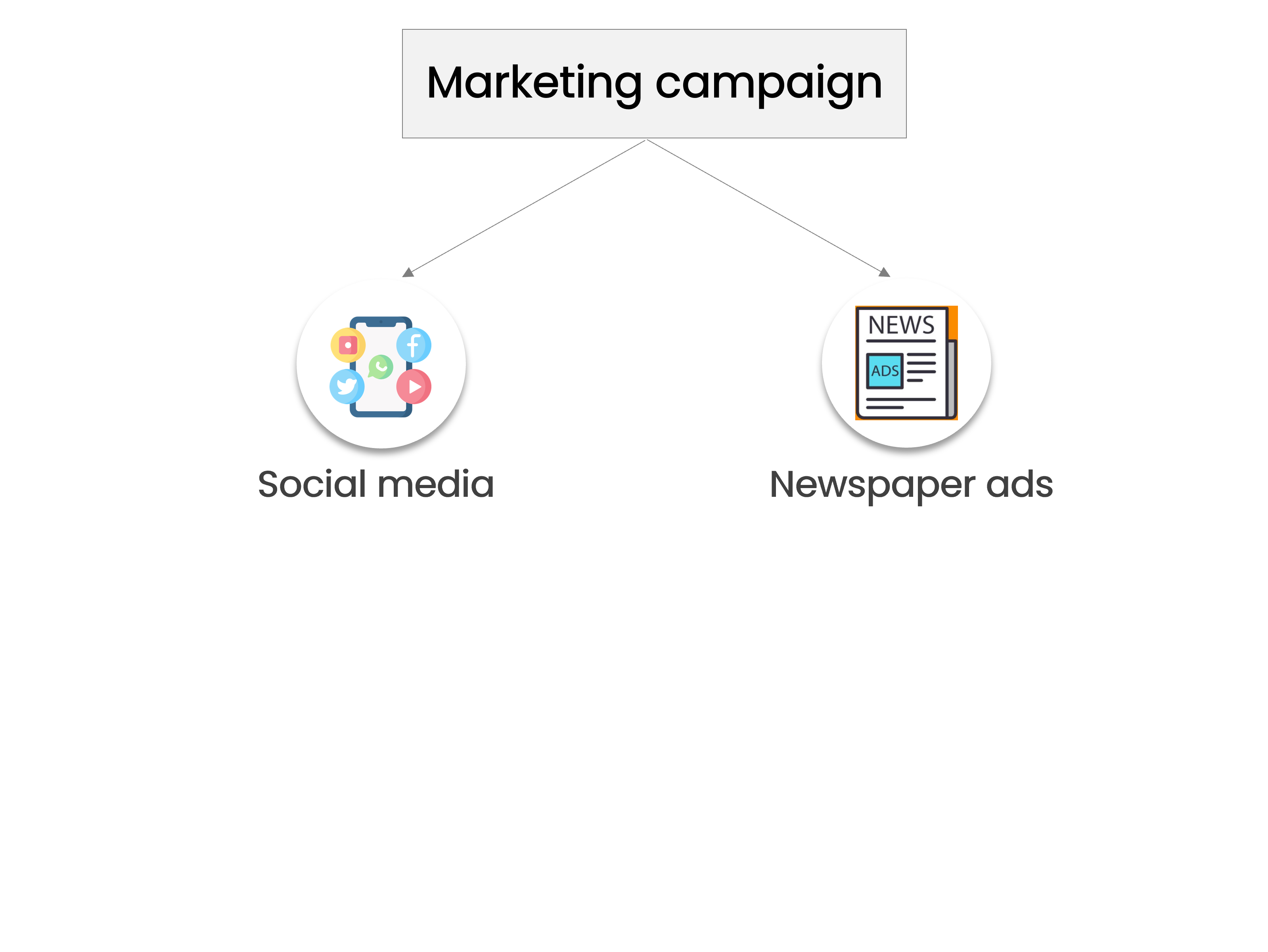
Building a Probabilistic Decision Model
The marketing team of a retail company is deciding where to launch the next campaign.
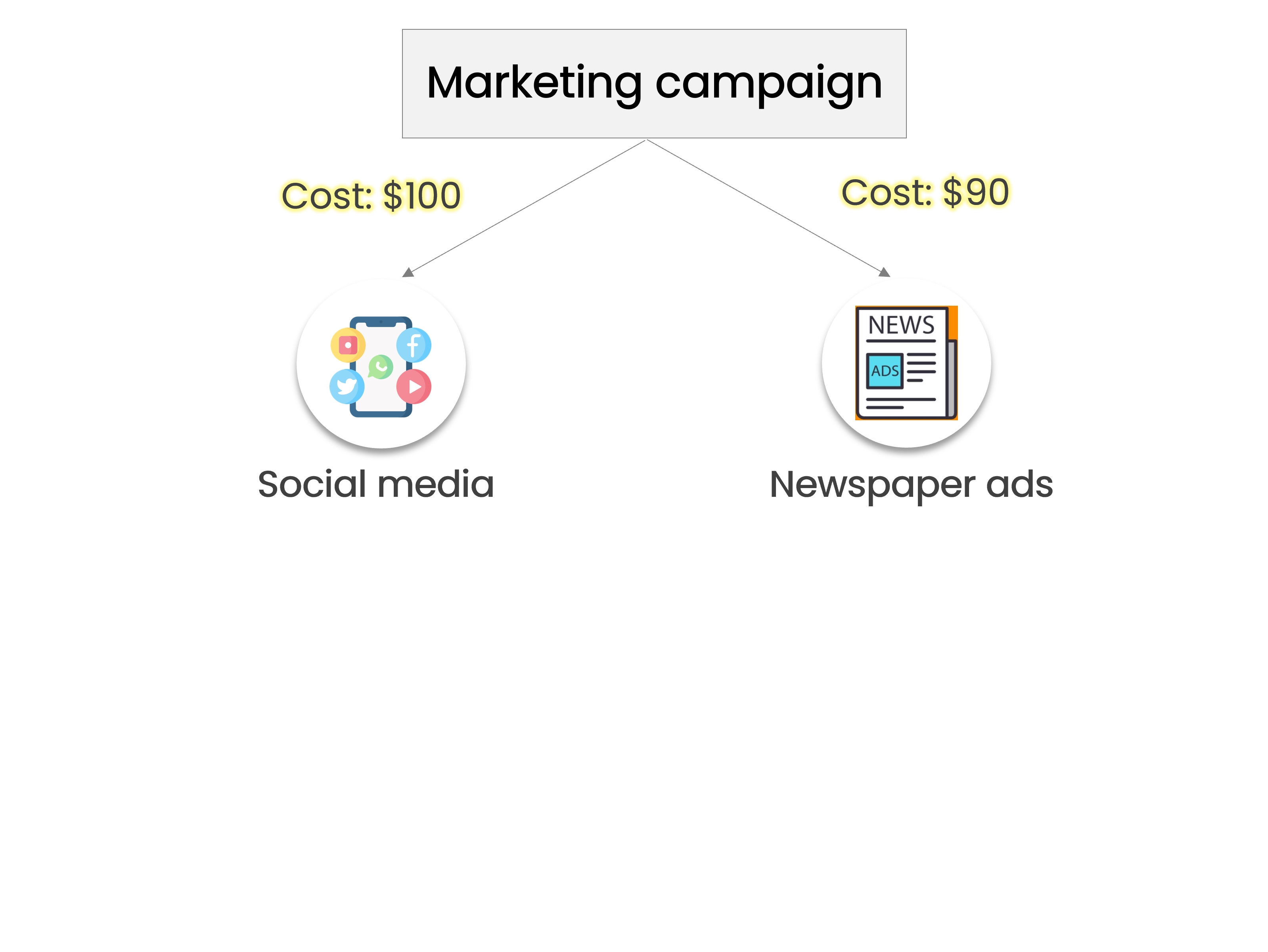
Building a Probabilistic Decision Model
The marketing team of a retail company is deciding where to launch the next campaign.

Building a Probabilistic Decision Model
The marketing team of a retail company is deciding where to launch the next campaign.
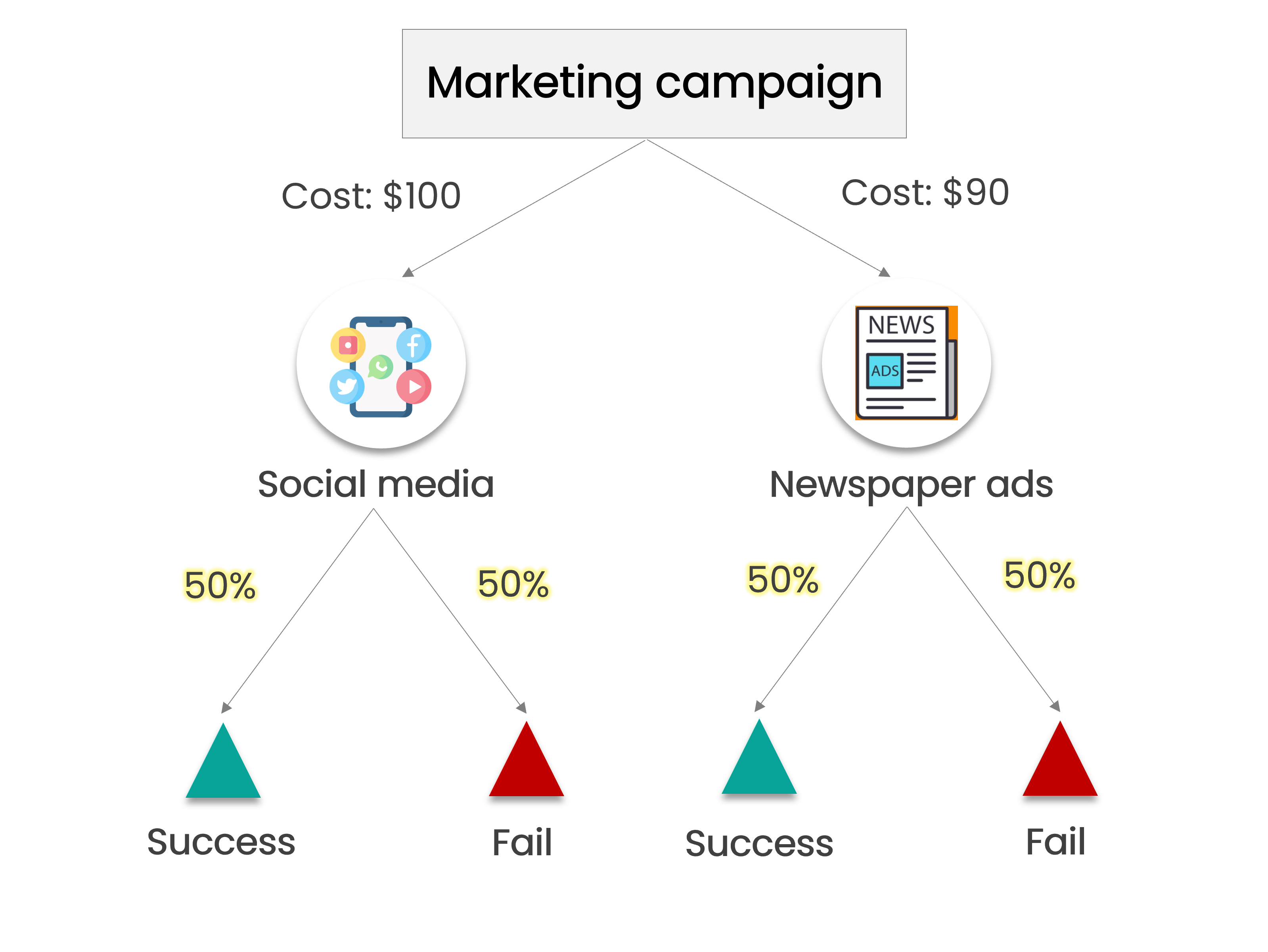
Building a Probabilistic Decision Model
The marketing team of a retail company is deciding where to launch the next campaign.
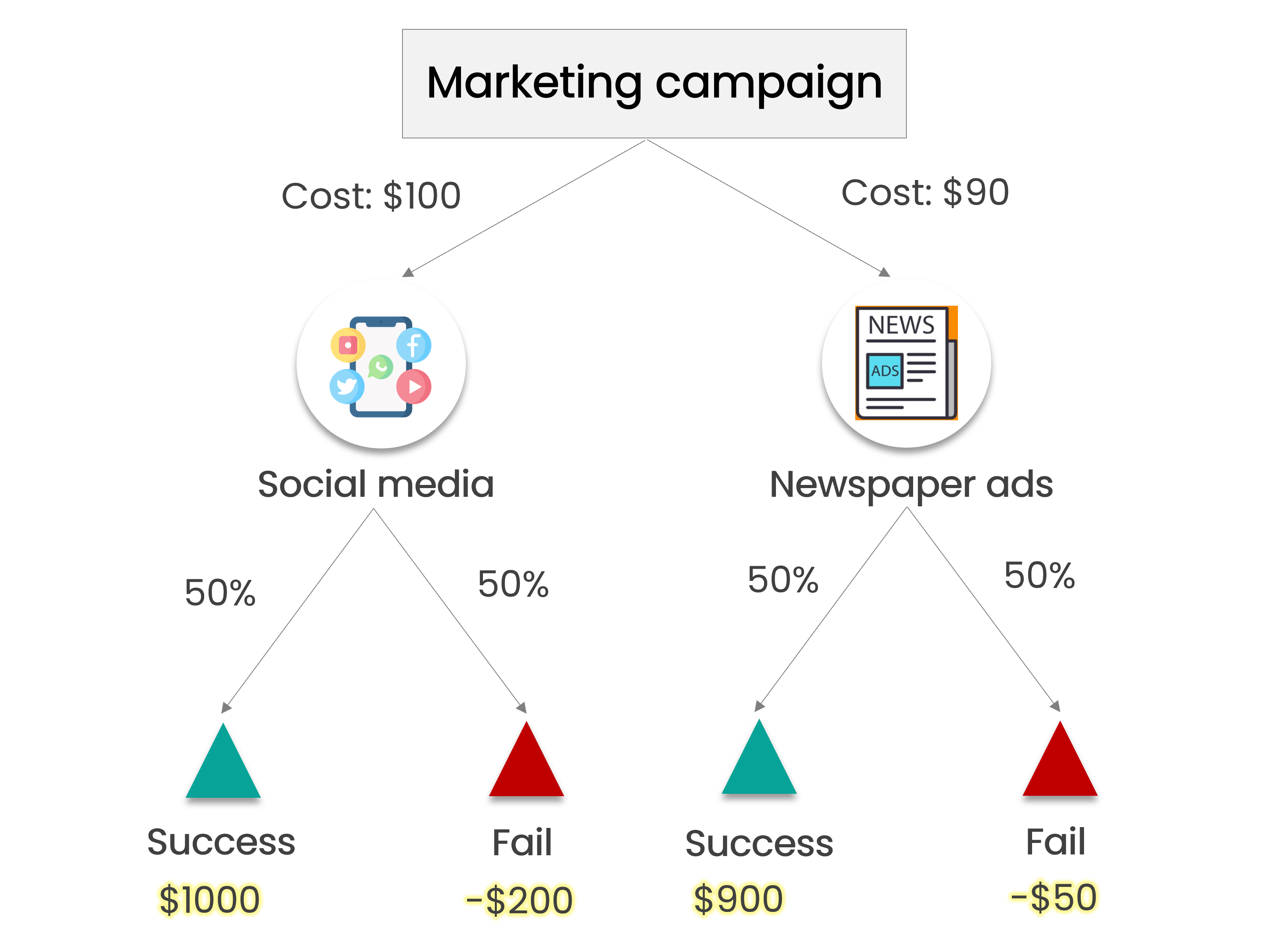
Building a Probabilistic Decision Model
The marketing team of a retail company is deciding where to launch the next campaign.
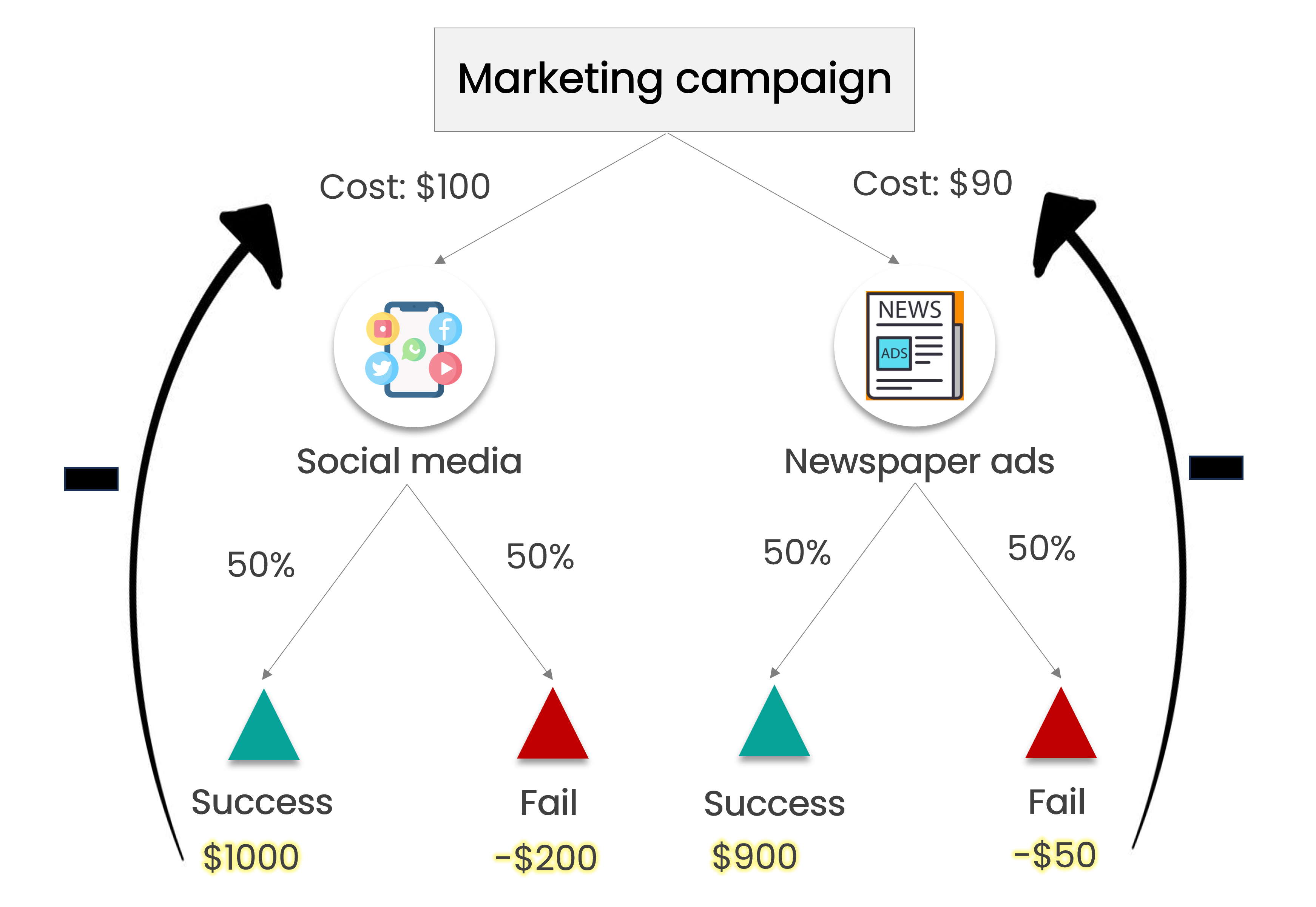
Building a Probabilistic Decision Model
The marketing team of a retail company is deciding where to launch the next campaign.
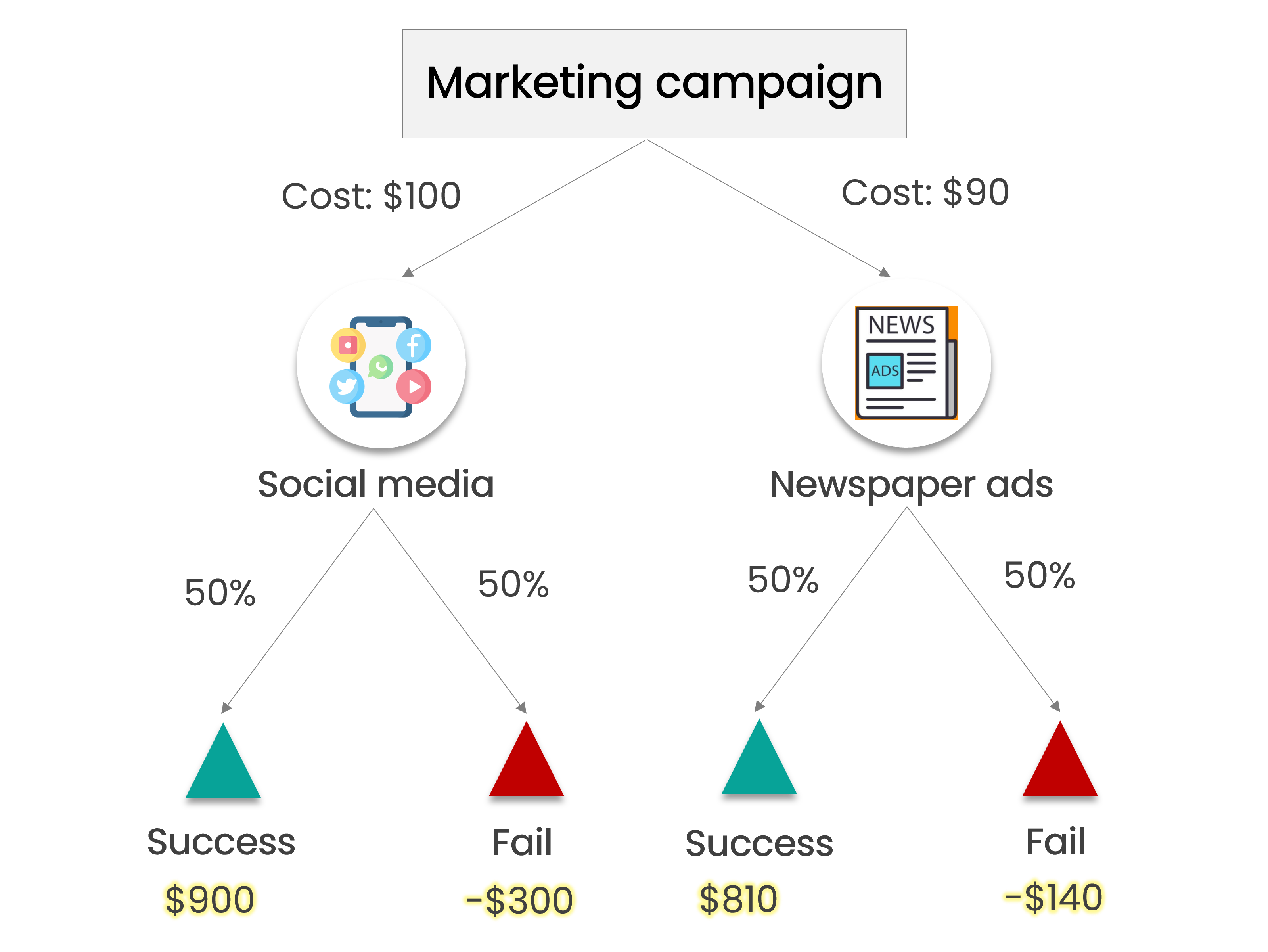
Evaluating expected value

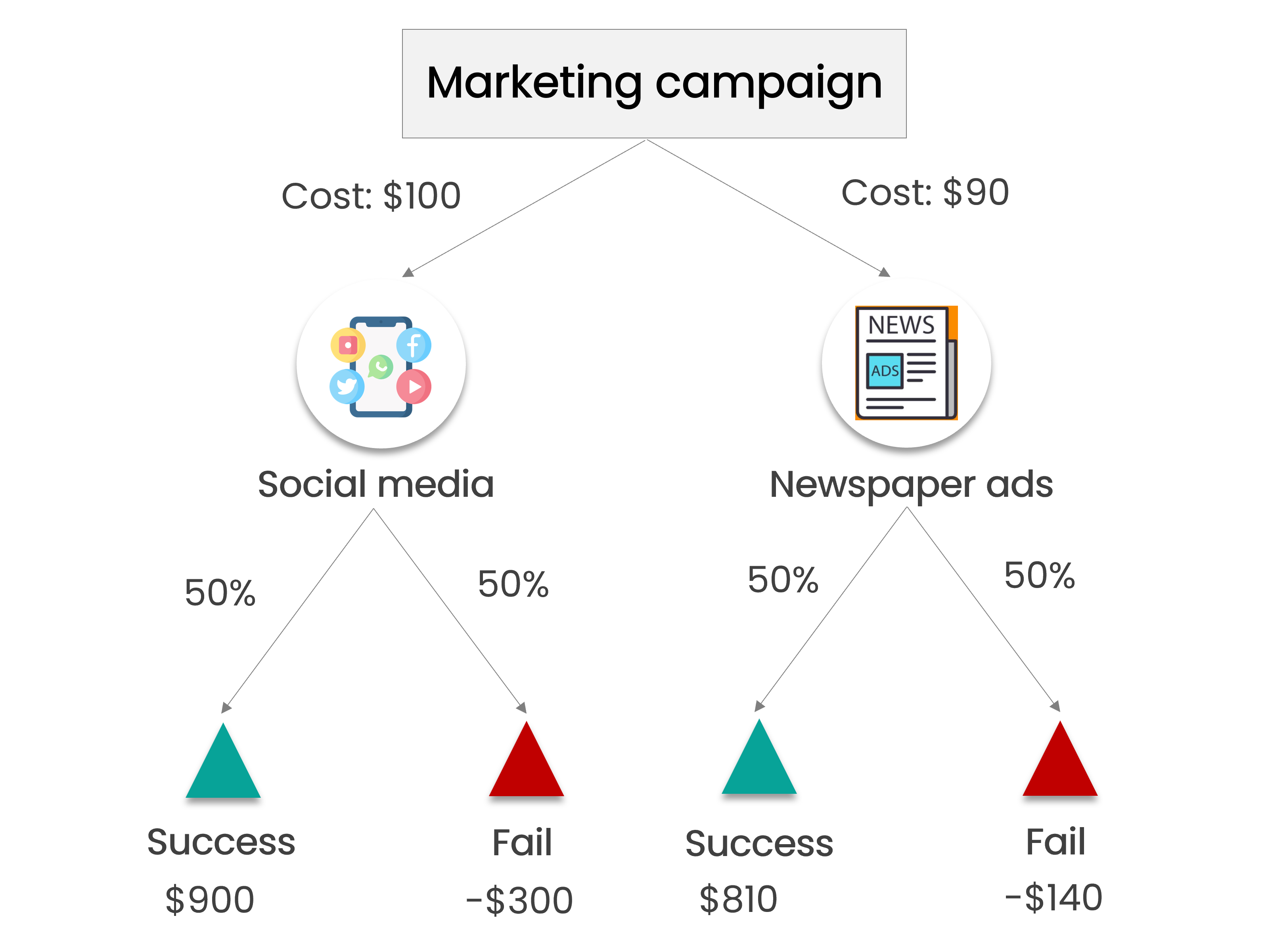

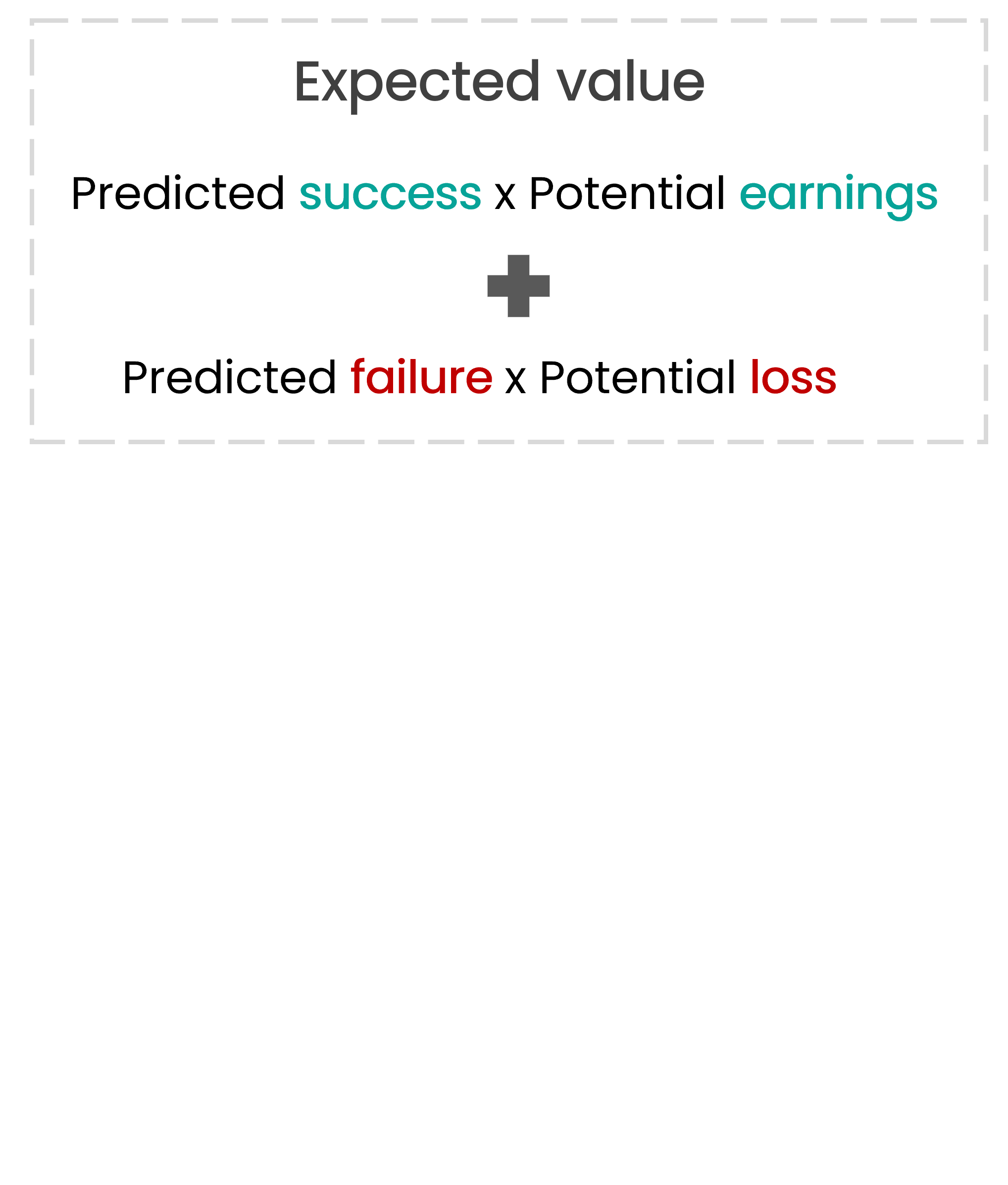
Evaluating expected value

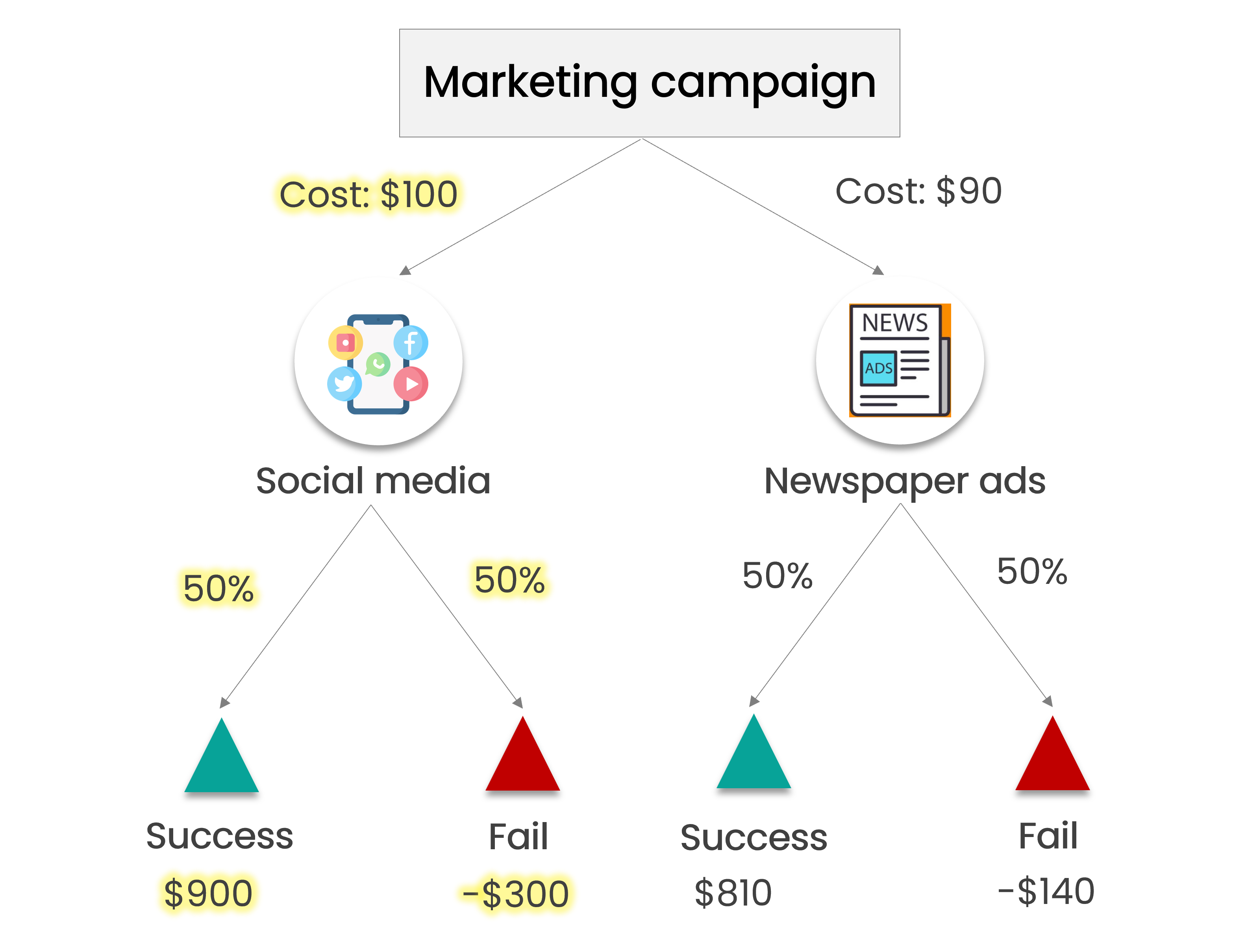

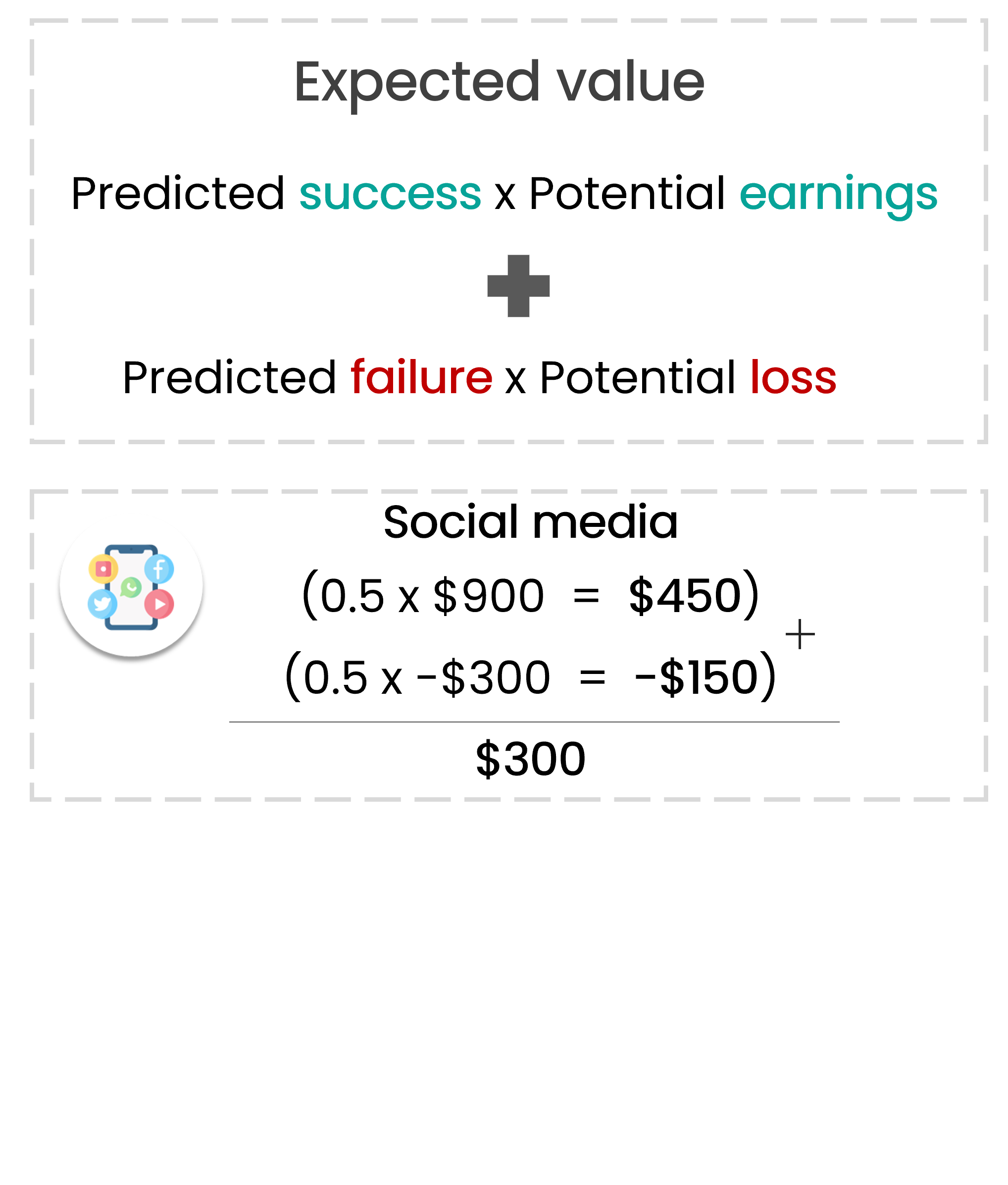
Evaluating expected value

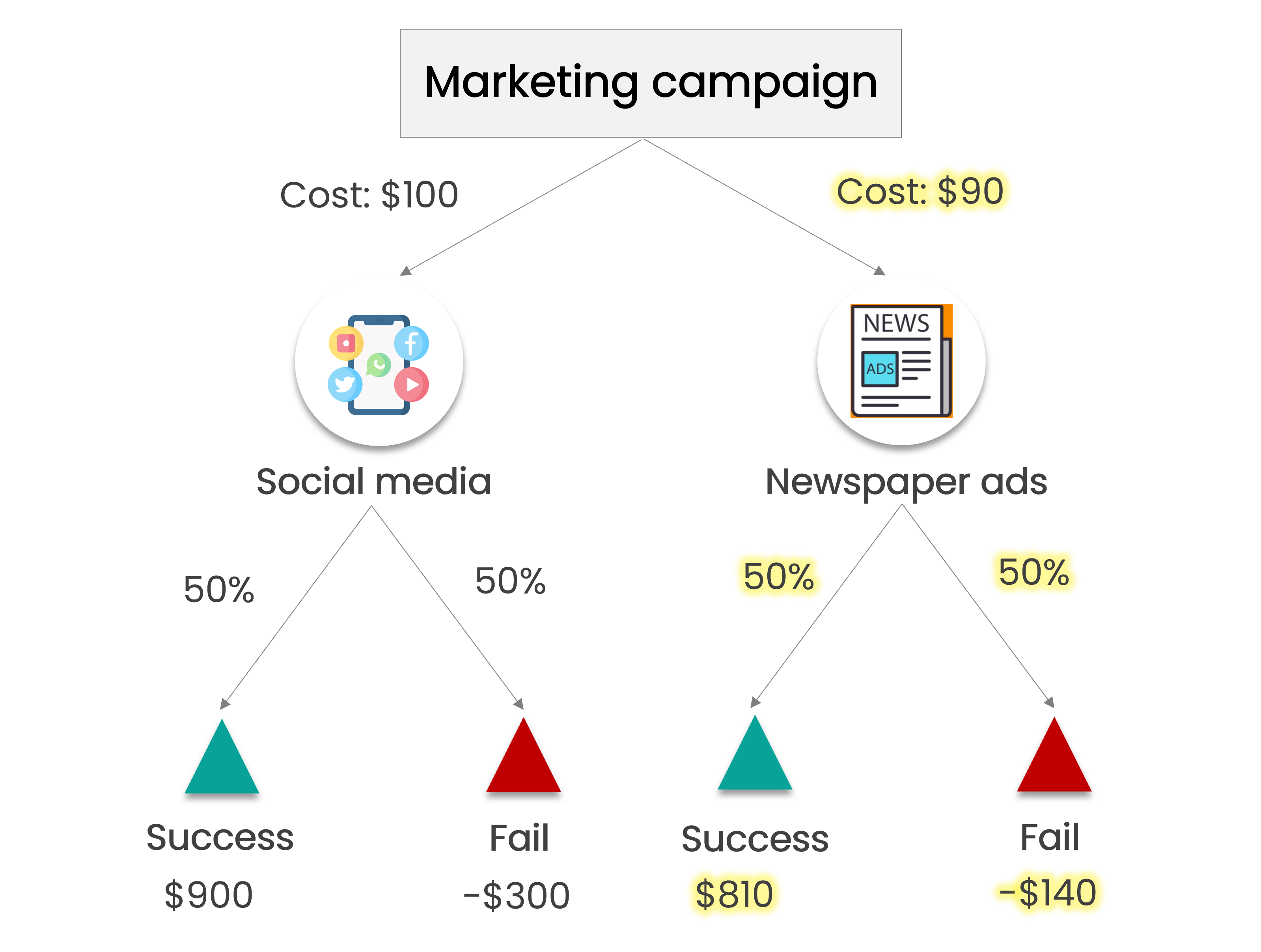

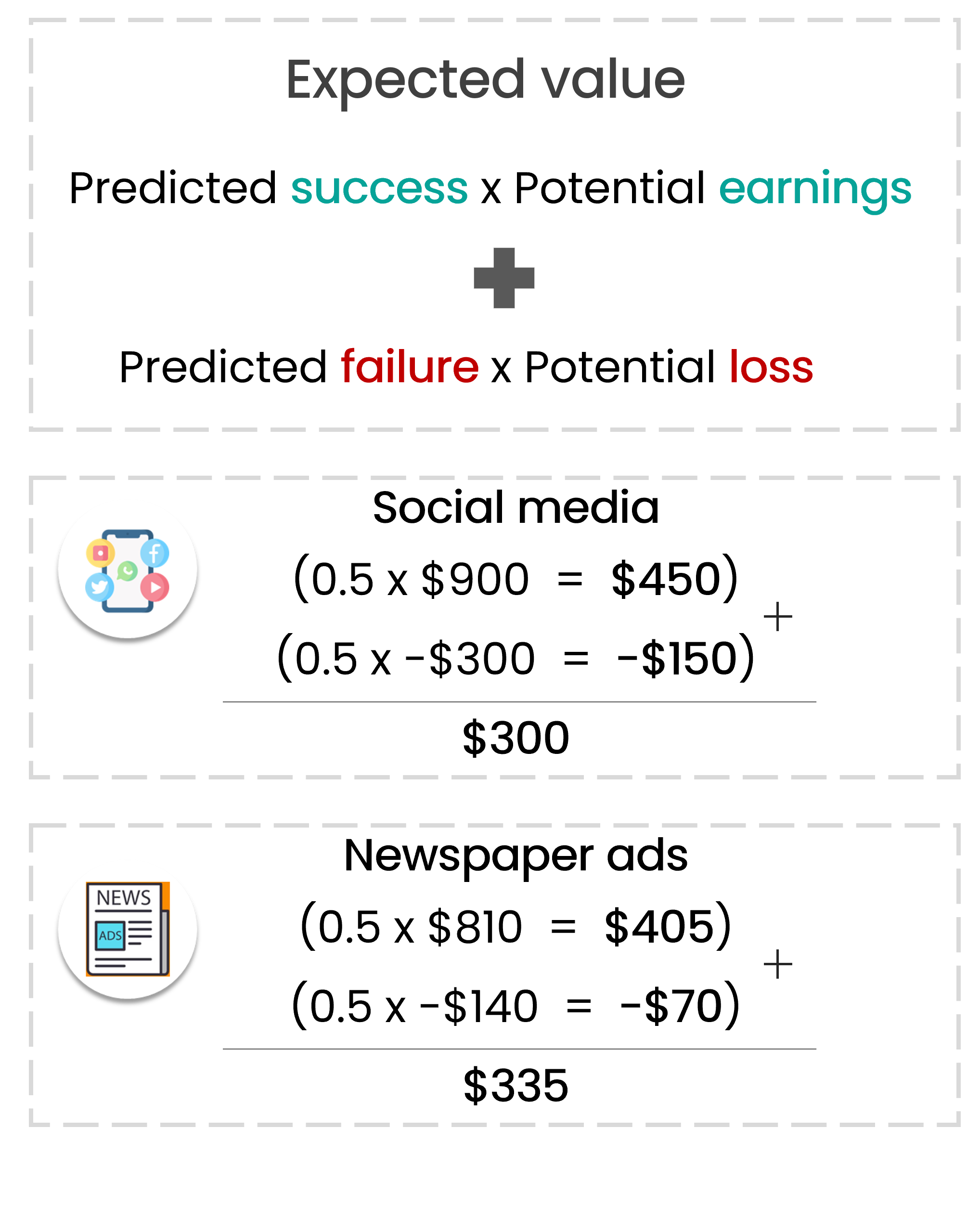
Evaluating expected value



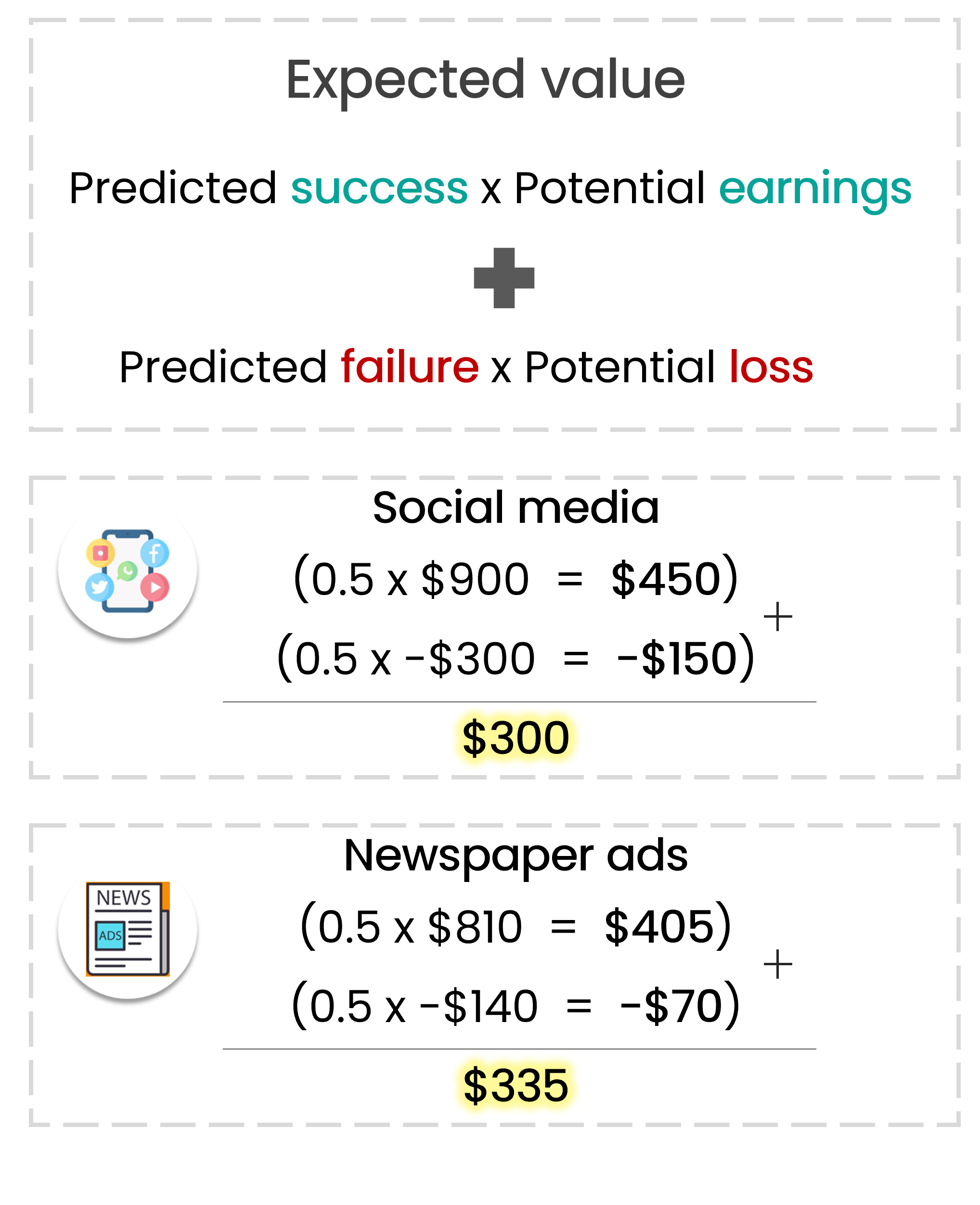
Let's practice!
Decoding Decision Modeling

